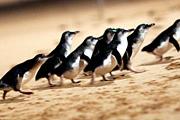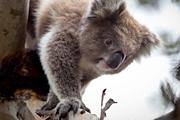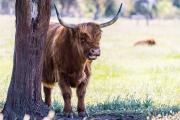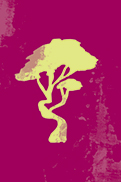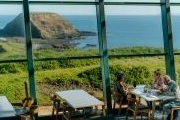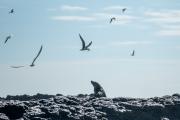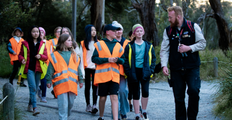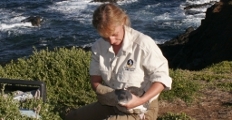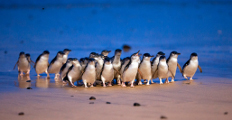Crusade to save critically endangered Crimson Berry plant
Crusade to save critically endangered Crimson Berry plant
A team of ecological explorers has embarked on a mission to salvage critically endangered plant specimens from Wilsons Promontory National Park to regenerate the species on Phillip Island.
Crimson Berry, otherwise known as Leptecophylla oxycedrus, are prickly shrubs that only grow to two metres tall but can be hundreds of years old. They get their name from the spectacular red, edible berries that grow on them.
The plant is now extremely rare, and while prolific in Tasmania, it’s only found on Phillip Island, Wilsons Promontory and Corner Inlet in Victoria.
Phillip Island Nature Parks’ Threatened Species Plan highlights crimson berry as one of the five key threatened flora species on Phillip Island (Millowl) and has a recovery action plan for the shrub.
To ensure it can continue to survive on the island, dedicated experts from Nature Parks, in collaboration with Parks Victoria marine rangers and field ecologists, travelled by sea to North Waterloo Bay, a remote location on the east coast of the Prom, to deliver a
translocation program for young crimson berry plants.
Phillip Island Nature Parks Ranger Susan Spicer said the seedlings in Wilsons Prom had been found along a walking track by Brooke Love, a restoration ecologist on Parks Victoria’s Prom Sanctuary team.
As the plants were growing on the walking track and were at risk of being trampled, Parks Victoria reached out to Nature Parks to see if they could support the recovery program. The seedlings had grown from plants estimated to be 300-400 years old.
‘’We see this as an opportunity to translocate the young crimson berry seedlings to a safer location and, in turn, this may help us increase the genetic diversity on the island,” Ms Spicer said.
But the conservation efforts are not without challenges.
“Crimson berry plants have extremely sensitive roots and do not like disturbance, so weneed to take great care in the translocation process,” Ms Spicer said.
“The seedlings will be cared for in the Barb Martin Bushbank until they are settled and showing active growth.
“Current crimson berry populations on Phillip Island are largely remnants clinging on to cliffs that had been spared the effects of agricultural practices. However, they are old plants and are not showing signs of natural recruitment.”
“We are very aware of the risks of a translocation like this, but if successful these plants could be moved to suitable habitat at Cape Woolamai where they would be cared for and closely monitored.”
Parks Victoria’s Brooke Love says the plants are very prickly, allowing small birds to nest with protection from predators. The berries are edible, making them a good food source for animals.
“They’re also notoriously difficult to propagate in a nursery, and environmental conditions must be just right for seeds to germinate in the wild. Luckily, at the Prom the species is thriving, so we’re really happy to be able to support the recovery on Philip Island,” she says.
Threatened species recovery is a key focus of Parks Victoria’s Prom Sanctuary initiative, to create Victoria’s largest conservation sanctuary and support a safe haven for species like the Crimson Berry.
After week one all transplanted seedlings are showing great results and at this point James Anderson the Nursery Coordinator at the Bushbank is confident of their survival.
“It’s exciting proof of concept and technique that even the most difficult, high risk species can be relocated,” Mr Anderson said.
“We have installed around 100 cuttings, which can take up to 6 months to strike and collected approximately half a kilogram of seed, which will become part of a comprehensive trial to research seed treatment methods with a view to larger scale production of this
species.”
Information and outcomes of the translocation will be shared with a Melbourne University student who is collaborating with Royal Botanic Gardens Victoria on a genetic study. The study will help explain how the plants relate to each other and other populations in Victoria and Tasmania, including at Wilsons Promontory.





